This post is also available in: Italian
We’ve recently received from Andrea Agapito Ludovici all the info about a very interesting leisure walk in Abruzzo. His suggested itinerary runs from San Liberatore Abbey to the Alento river springs, within the Majella National Park.
The abbey of San Liberatore alla Maiella, in the municipality of Serramonacesca (province of Pescara), is one of the oldest monasteries in Abruzzo and dates back to the IX century, although it was entirely rebuilt after the terrible earthquake of 990 and subsequently restored.
It entered a slow decline during the 1800s, especially when Napoleon began suppressing many monastic orders in 1806. What remains of the ancient structure has been declared a national monument since 1902: it currently treasures several medieval frescoes in the apses, and a precious floor in the central nave, dating back to 1275.
The abbey can be reached by car from the village of Serramonacesca, following the very road signs. Its name means “the greenhouse of the monks”, as the village used to be surrounded by very forest where the locals and the monks cultivated several plants in their makeshift greenhouses.
After leaving the car, go down the path on the left, towards the Alento river (its springs are just a short distance from the Abbey). The path runs along the river, crossing a forest made of poplars, willows, ferns, maples, ash trees, hornbeams and ivy, inhabited by roe deer, foxes and hedgehogs. The path is easy and suitable also for the youngest trekkers, but at times it may get slippery.
It is dotted with waterfalls, small bridges, gorges and pools of water, where you can get wet, and there are also several fallen trees. The gorges among the rocks get eventually wider until you reach, on the left, the Rocky Tombs of San Liberatore a Majella: five cavities carved into the rock by an alleged group of hermits between the VII and IX century – they house three tombs, a niche and a small chapel, with a rainwater cistern.
The path continues along the banks of the river, up to three small pools of freshwater: Pozza dei Cinghiali (“Boar Pool”), the Trout Area and the Waterfall Area. From there, you can quickly reach Gole dell’Alento, and the very river springs. You can then go back or continue through the woods to Polegra Tower, a defensive structure for the Abbey, built together with the nearby Menardo Castle.
Photos by Andrea Agapito
This post is also available in: Italian



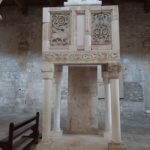

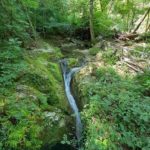

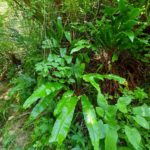
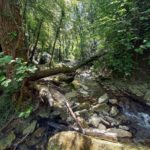
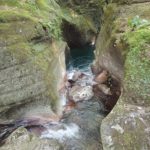


Leave a Reply